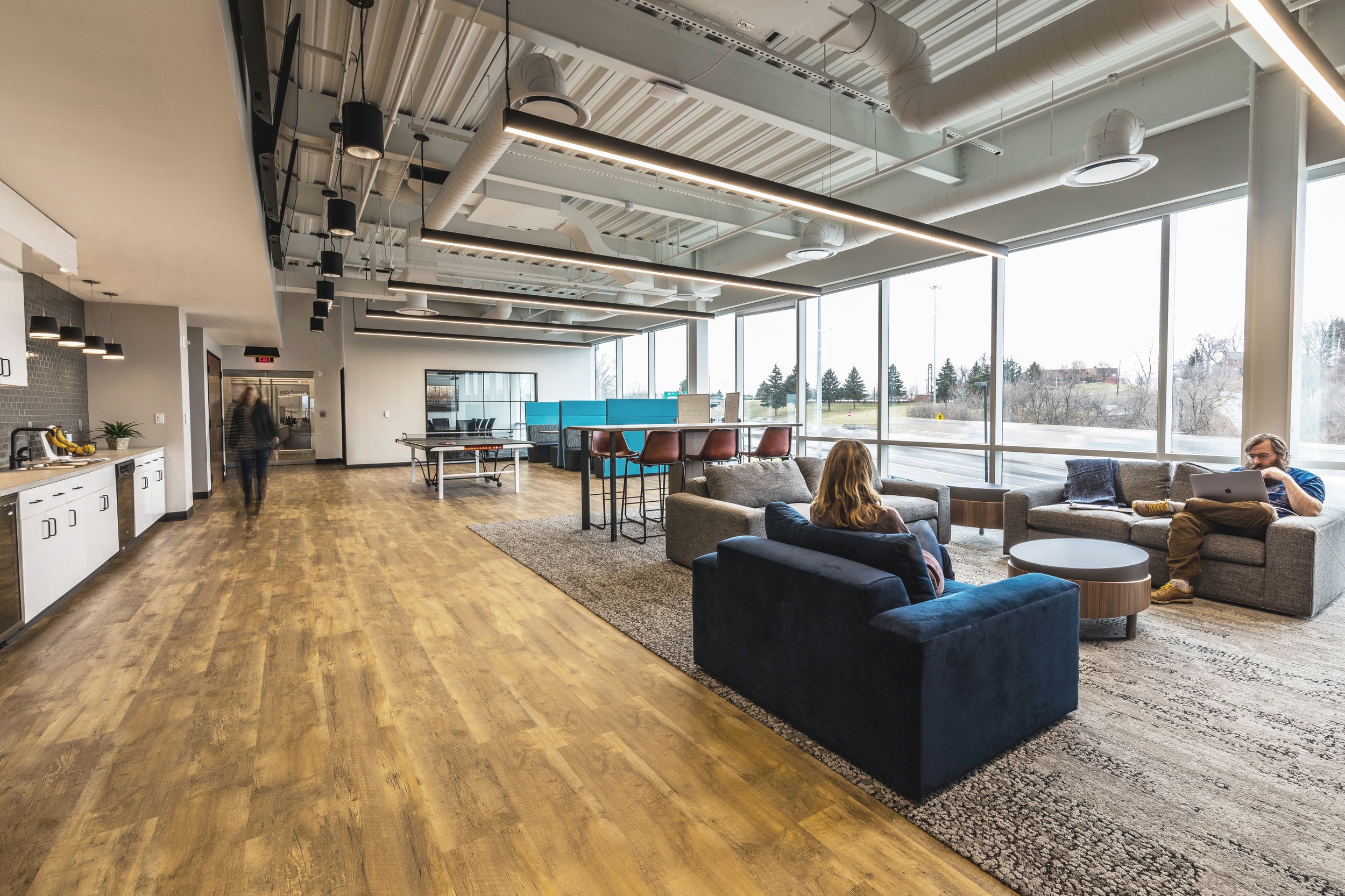It’s Not the Rent. It’s the Retention
By Jim Scalo
You already know that the world’s best companies are moving into dynamic office spaces tailor made to look good on Instagram. But do you know the real reason that impressive lobbies, luxury amenities, giant fitness centers, and rooftop decks matter?
Yes, they help recruit top talent, increase productivity, enhance culture, and improve customer relations. But the real reason companies are making the move is far simpler: these spaces can save you millions of dollars per year.
Before we dive into how, let’s think about two questions:
1. Do you think the employees at your company know what the rent is? (No.)
2. Do you think the employees at your company know how their workspace makes them feel every day? (Yes.)
It’s not about the rent. It’s about the retention.
According to Jack Altman, CEO of Lattice, whenever an employee departs, the average company spends:
· $25,000 to advertise the vacancy, interview candidates, and hire someone new
· $10,000 on the on-boarding and development process
· $50,000 on the resultant productivity drain
That’s $85,000 per departing employee. American employers suffer through an 18.5% rate of turnover every year, so for every 100 people you employ, you lose $1.6 million dollars annually. And this is just the average. Turnover in upper management or among highly educated contributors costs a terrifying 213% of that person’s annual salary.
This might be tolerable if every vacant job could be filled immediately with top-quality candidates, but with the shockingly low national unemployment rate of 3.6%, finding suitable replacements is more challenging than ever. 60% of employers have to work through job openings for more than twelve weeks.
How much productivity, revenue, and customer loyalty are you losing when a key job remains open for a full fiscal quarter?
Outdated spaces also expose you to the potential for exodus. That turnover problem has a tendency to compound when your remaining employees see where everyone is going. Even if they don’t speak directly with departing employees, they have social media. They get text messages from friends they used to work with. Eventually, they will see the incredible spaces and cultures that their colleagues are departing for.
When this happens, it is only a matter of time before one departure leads to two, then two become four, and eventually you are losing average employees and high-performers alike. How much would it cost to cede an entire team to a competitor? The productivity losses would be painful on their own, but what if that high-performer or team also takes customers with them? Customers don’t invest in companies; they invest in relationships.
Turnover costs an average of 12% of pre-tax income for the average company. For those with a high rate of turnover, the number can be as high as 40%. Most just shrug and accept this rate as unavoidable—especially today, when Millennials and Generation Z are so notorious for job-hopping. They chalk it up as an uncontrollable cost of doing business.
But it doesn’t have to be.
97% of respondents to a UK survey said that they viewed their workplace as a reflection of how much their employers value them. Meanwhile, only 37% believed that their offices were designed to make them happy, healthy, and productive, and nearly a third of them said they were ashamed to meet with clients in their offices.
What if moving into a dynamic office space could improve your retention rate by 20%? That’s an annual savings of $320,000 just on the turnover costs we can measure, with considerably more bottom-line benefits related to the boost in engagement, morale, productivity, and customer relations.
Long-tenured employees turn in better numbers across the board, so if you could convert 20% more of your employees into the long-tenured category, what would that mean to your company’s bottom line?
The potential competitive advantage here is clear: if you have a dynamic office—one that your employees are so proud of that they share pictures of it on Instagram and brag about it to their friends and colleagues, you will retain more employees. Meanwhile, those employees you retain will be happier and more energized, engaged, and productive at work, all of which improves work product, customer relations, and ultimately, the bottom line.
Better space, lower turnover expenses, more cohesive staff and culture, higher profits—it is no wonder that the world’s best companies are making this move to top notch office spaces that help recruit and retain high-performing people. Why aren’t you moving, too?

